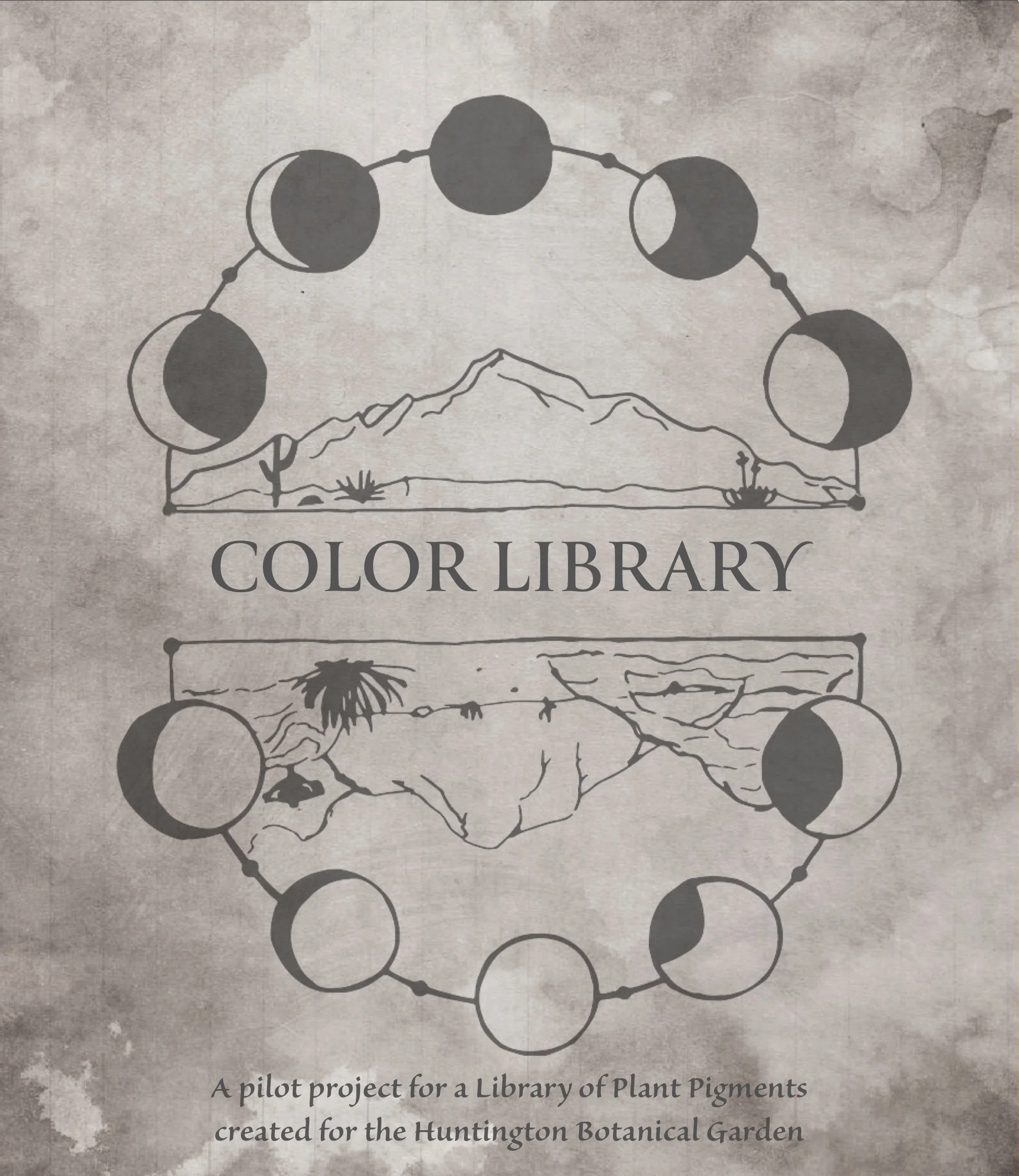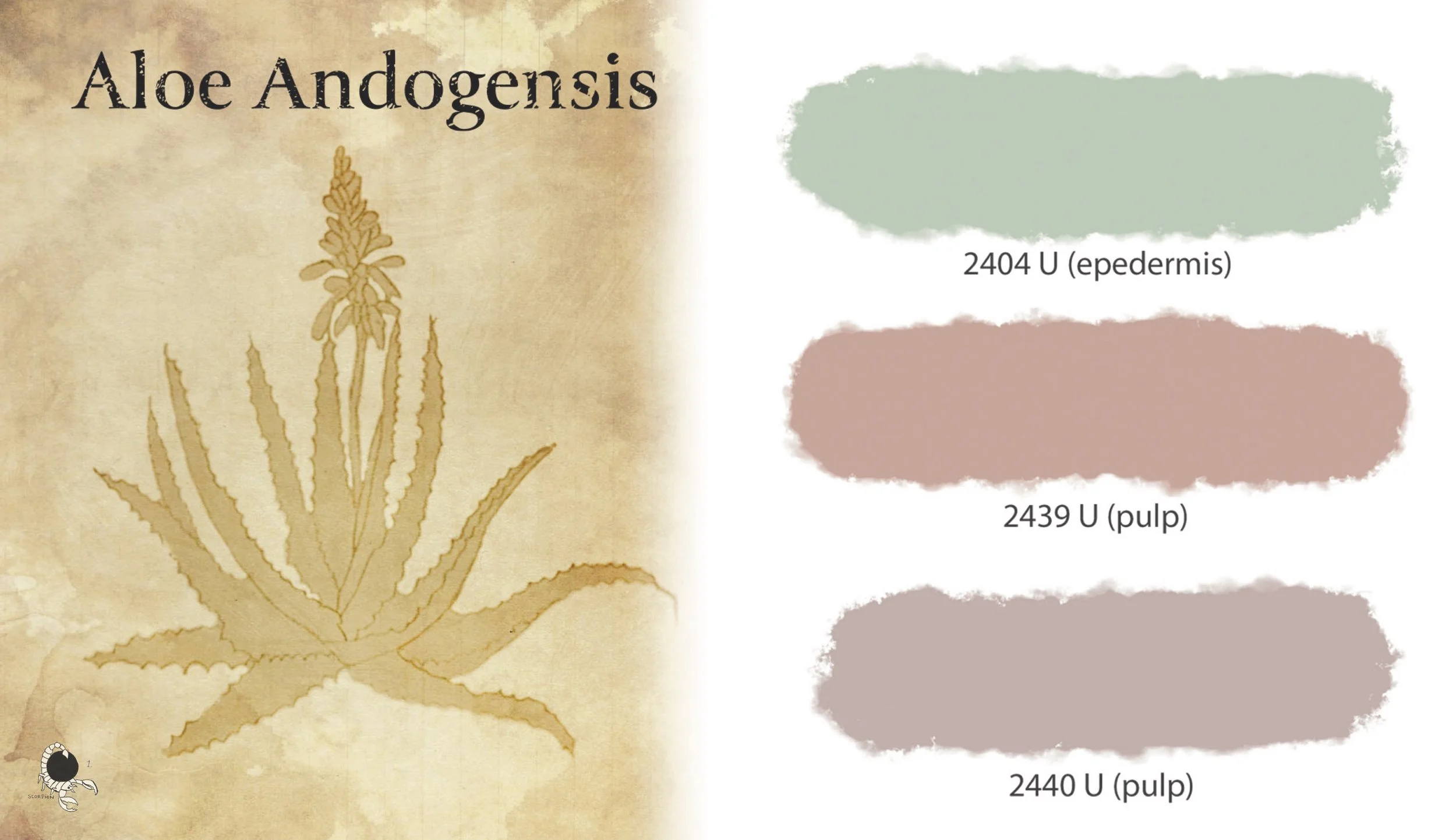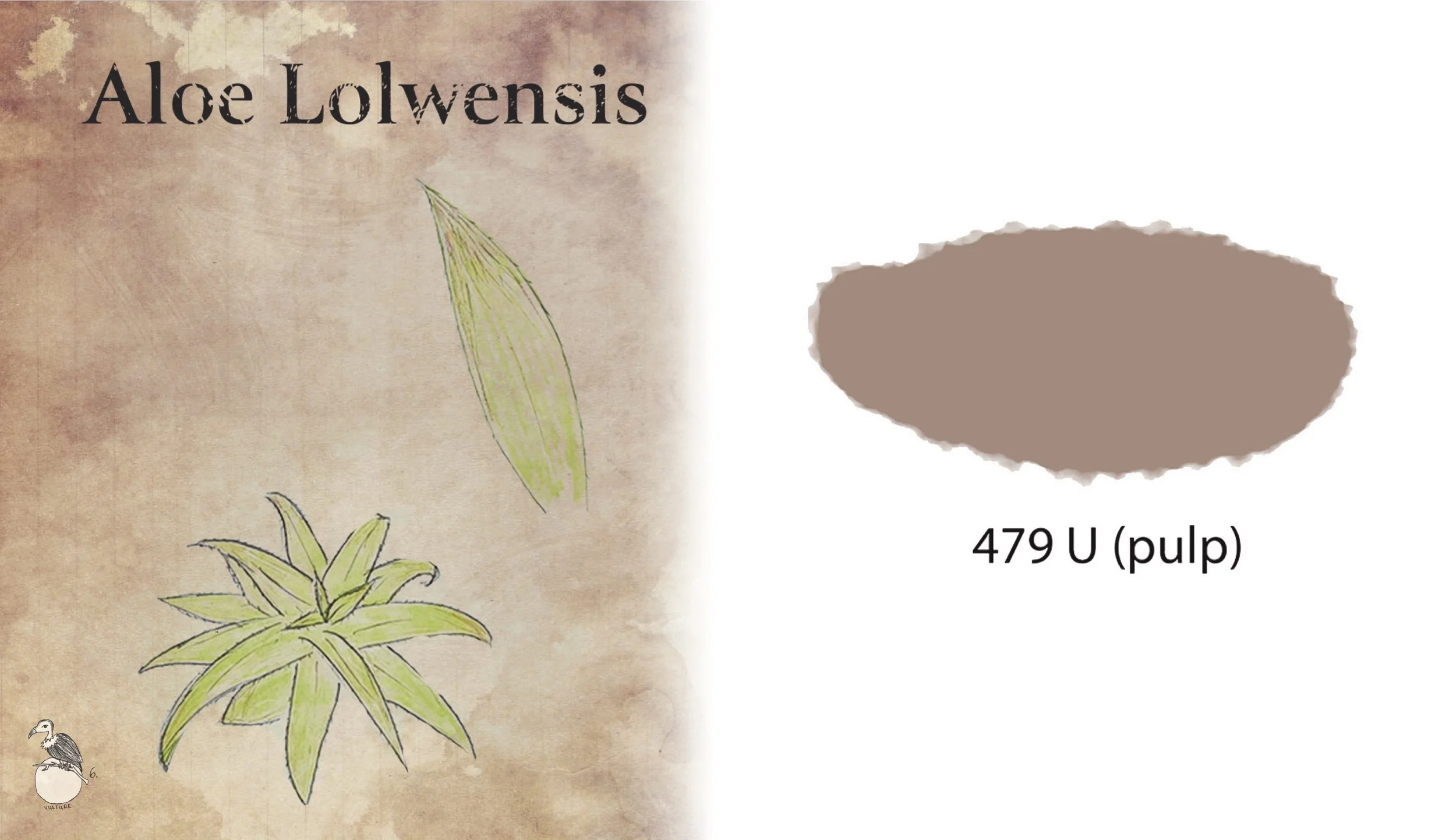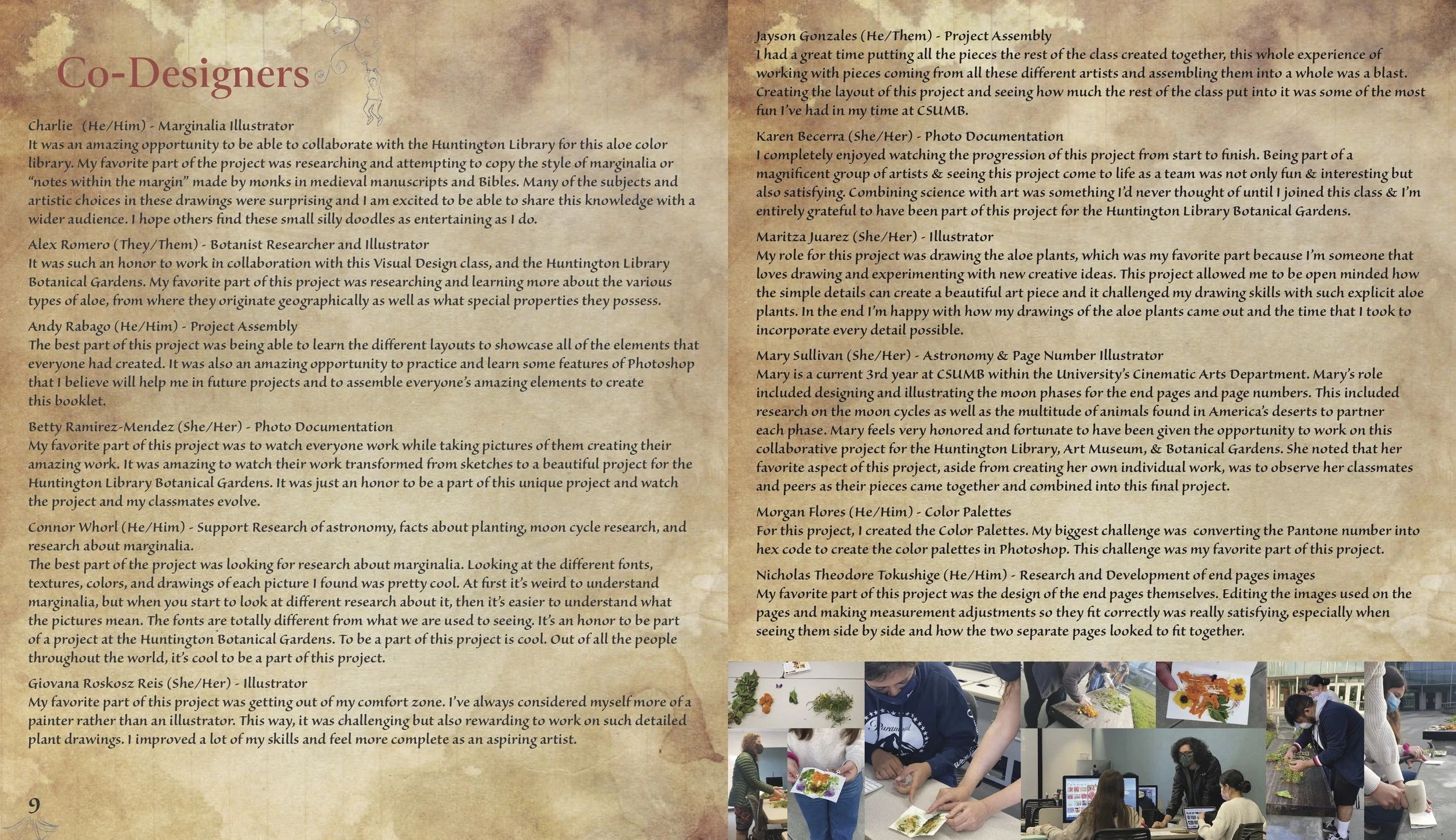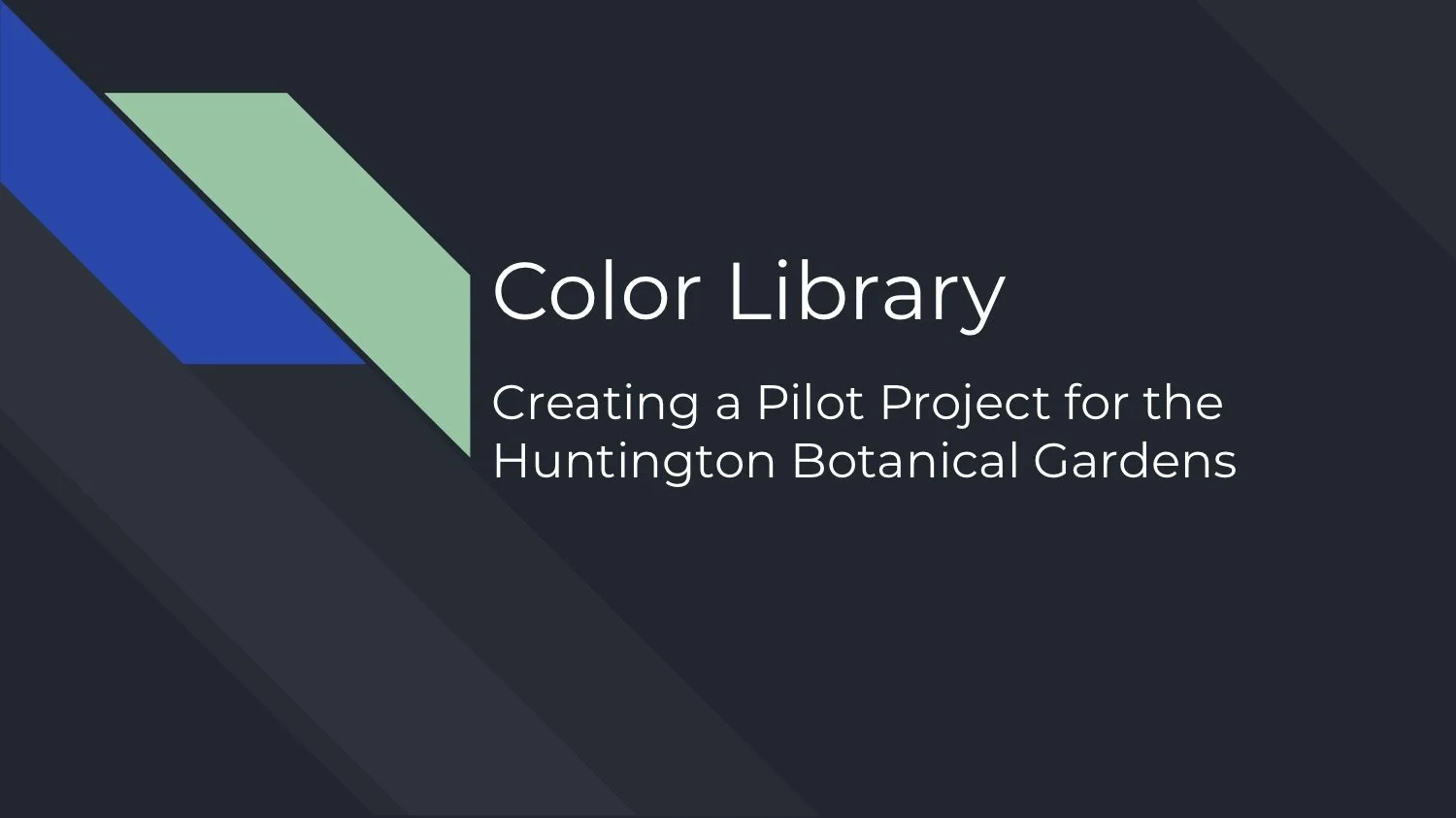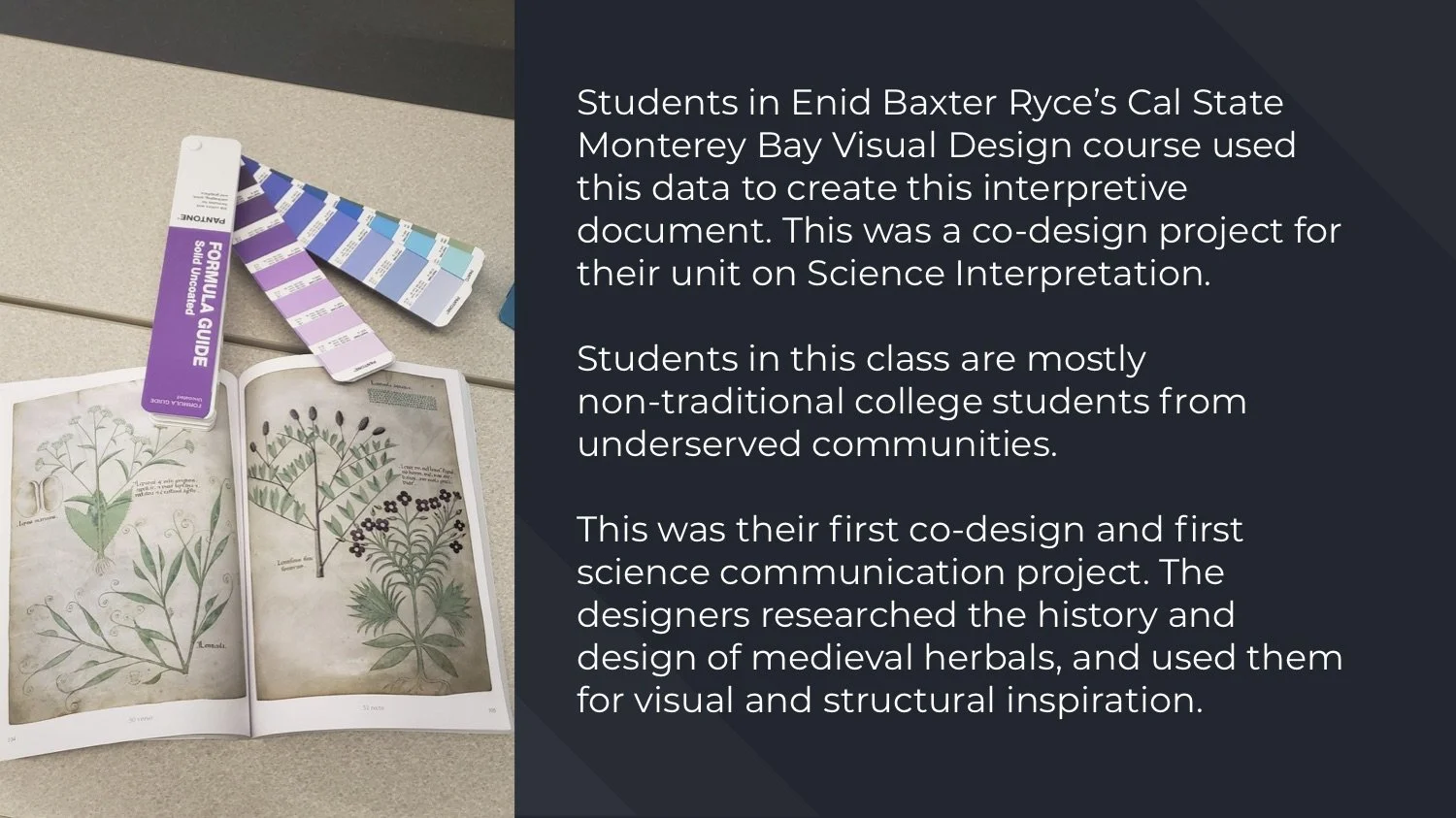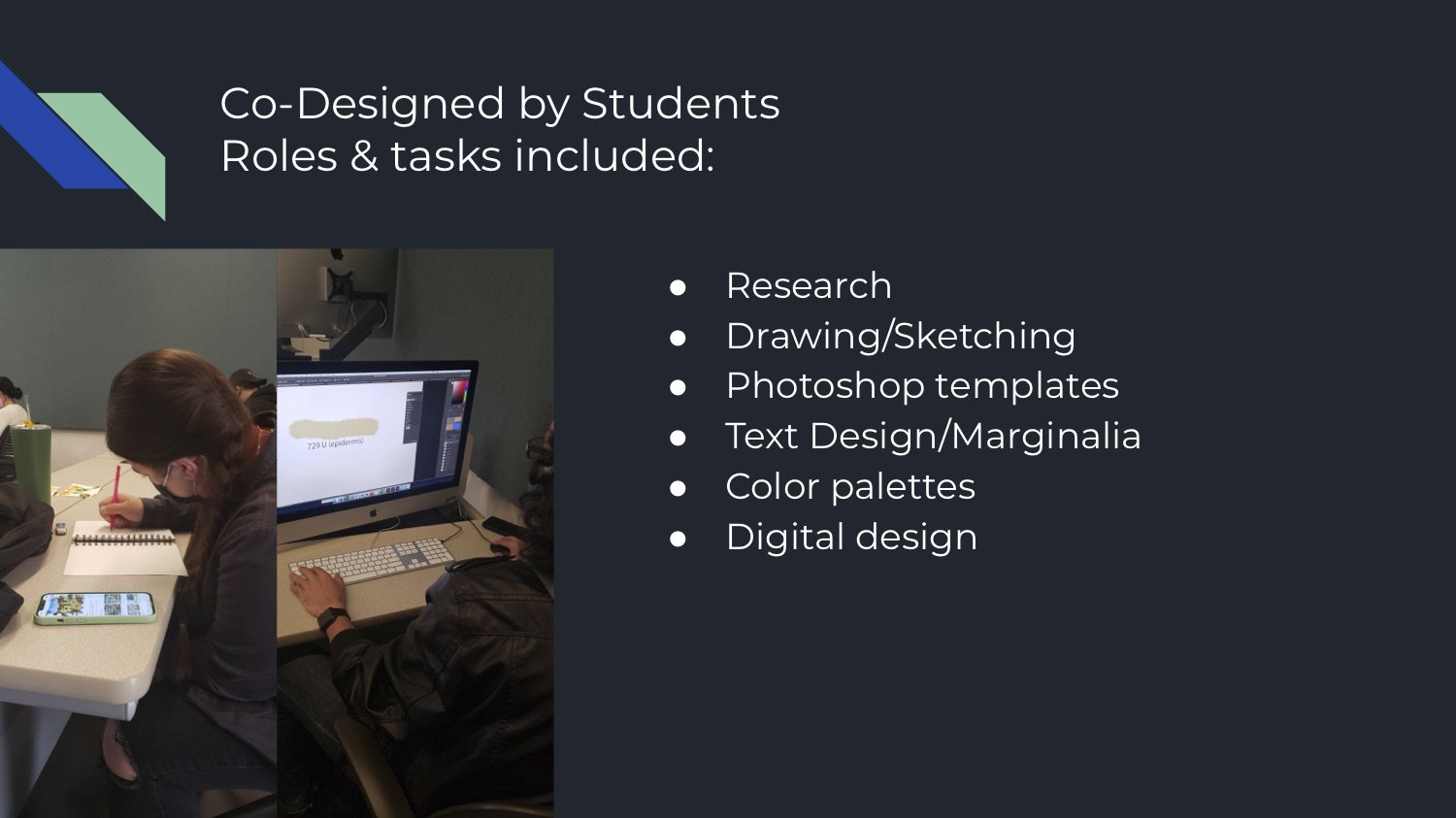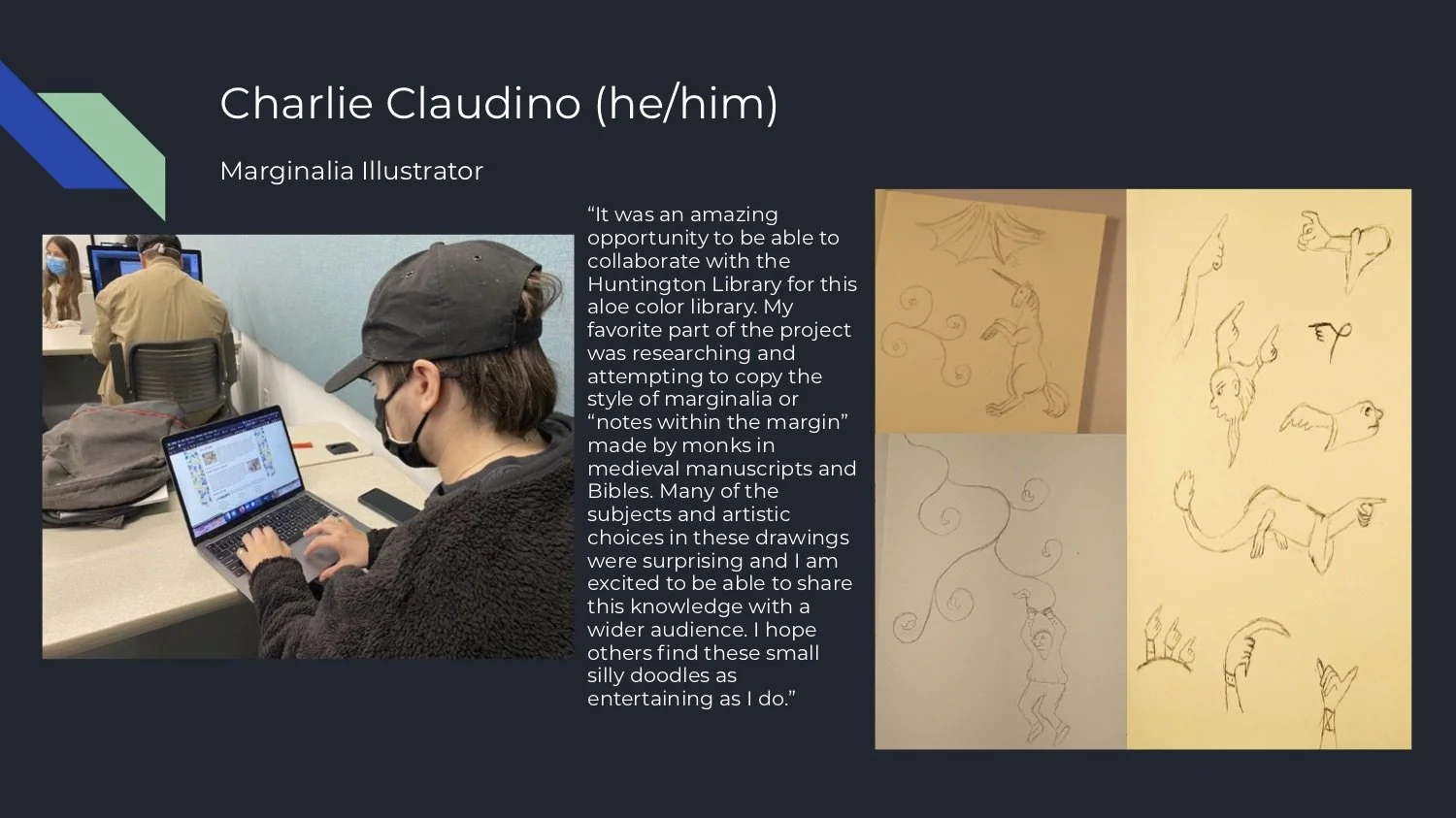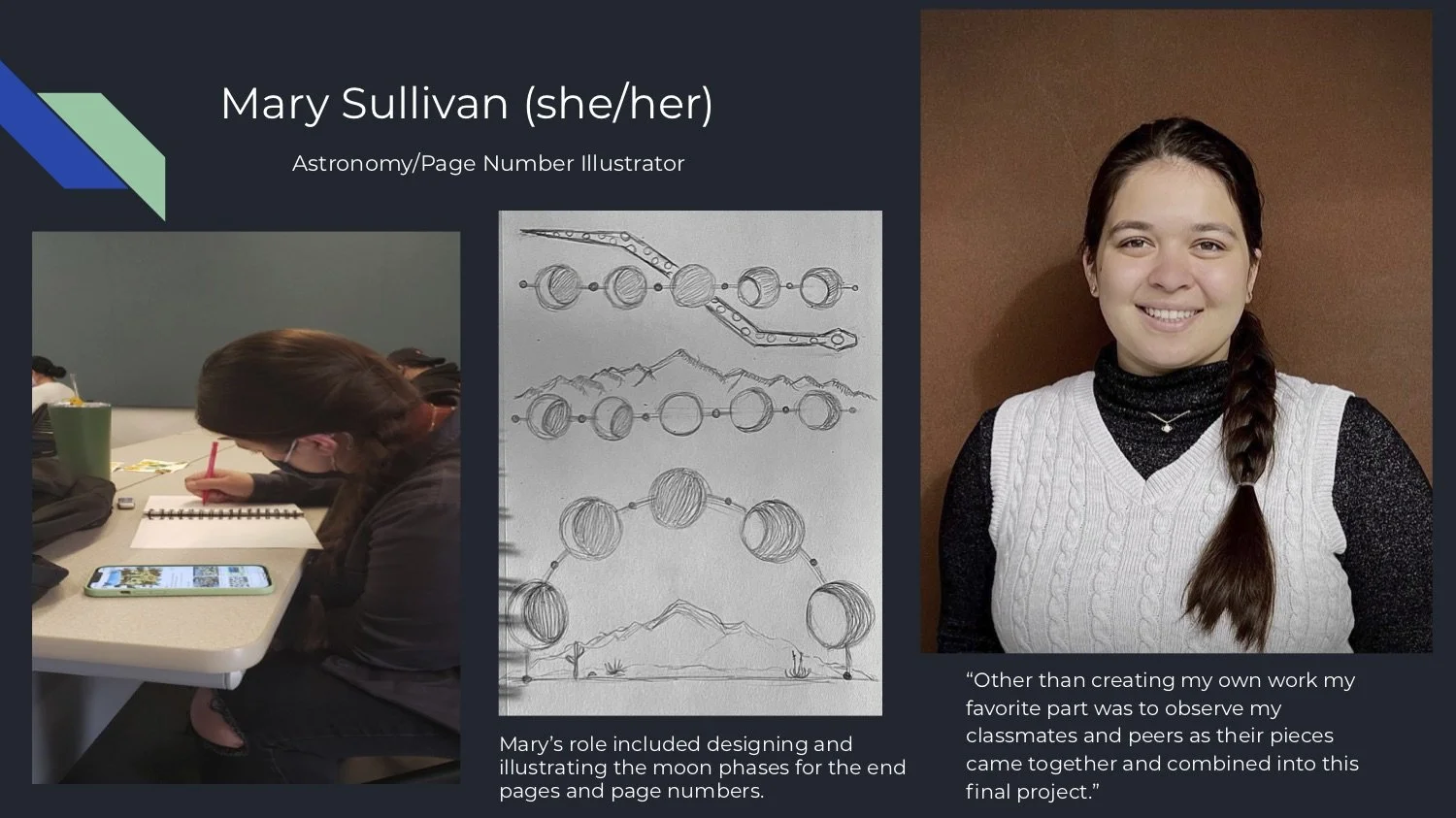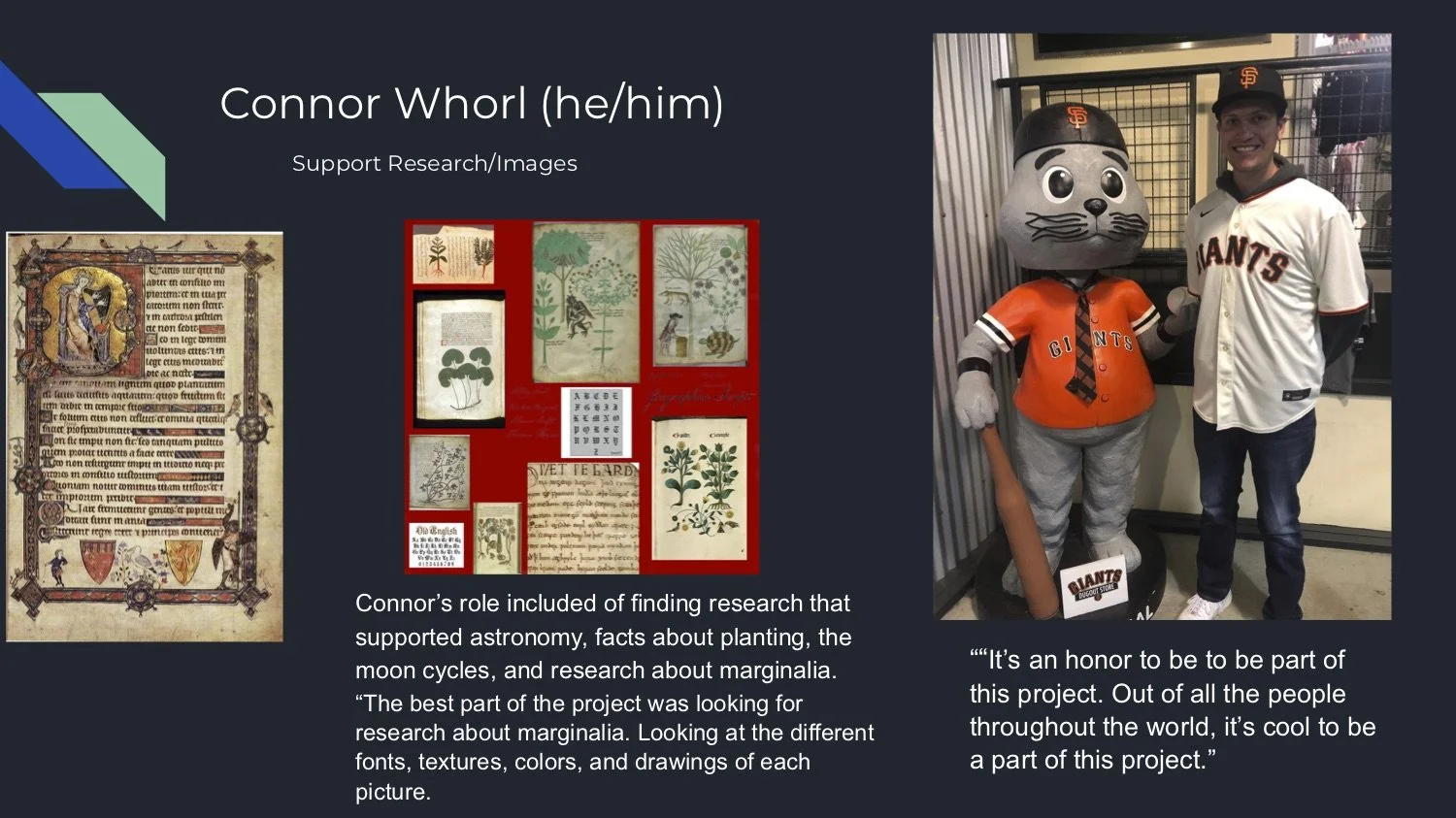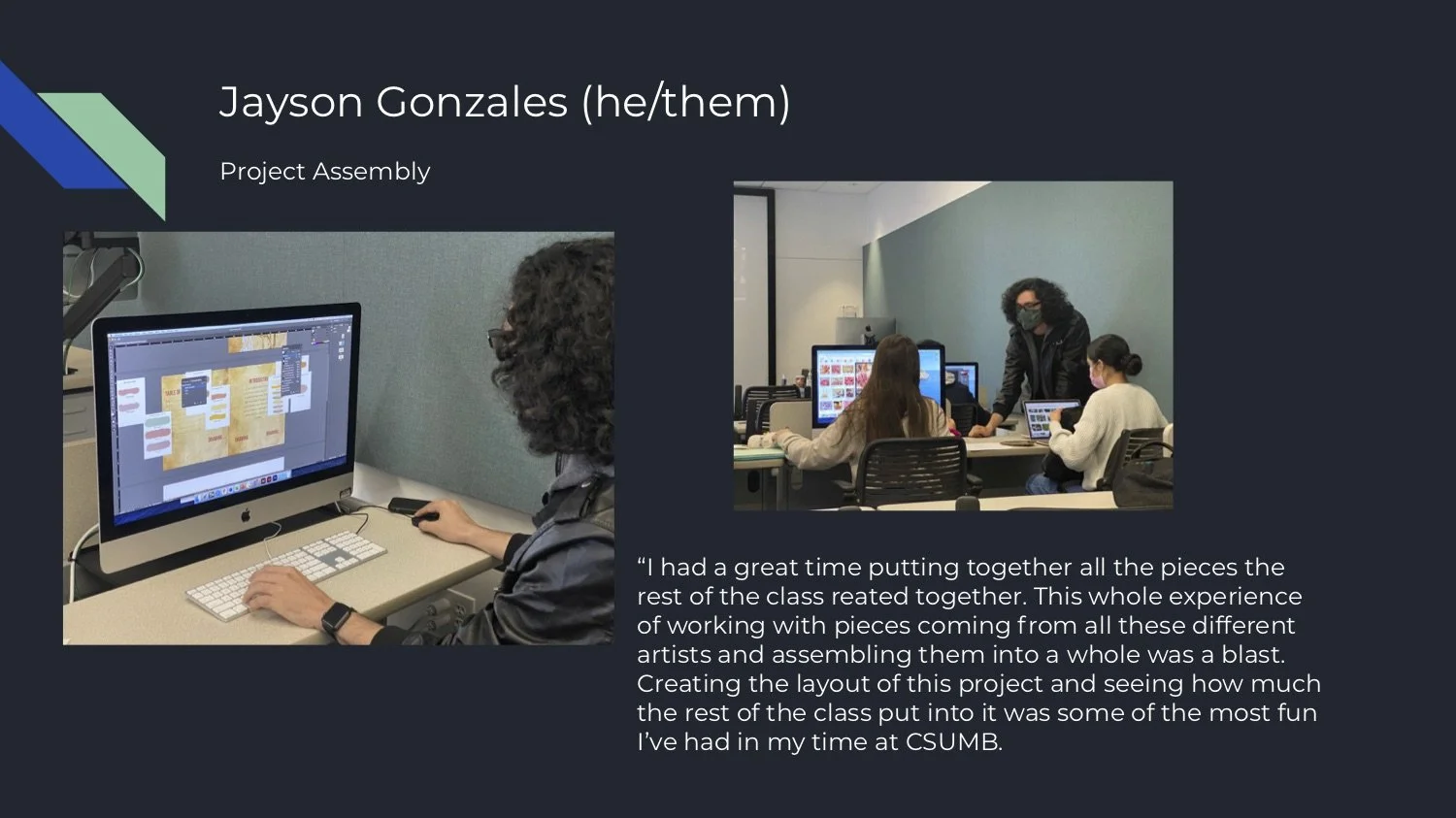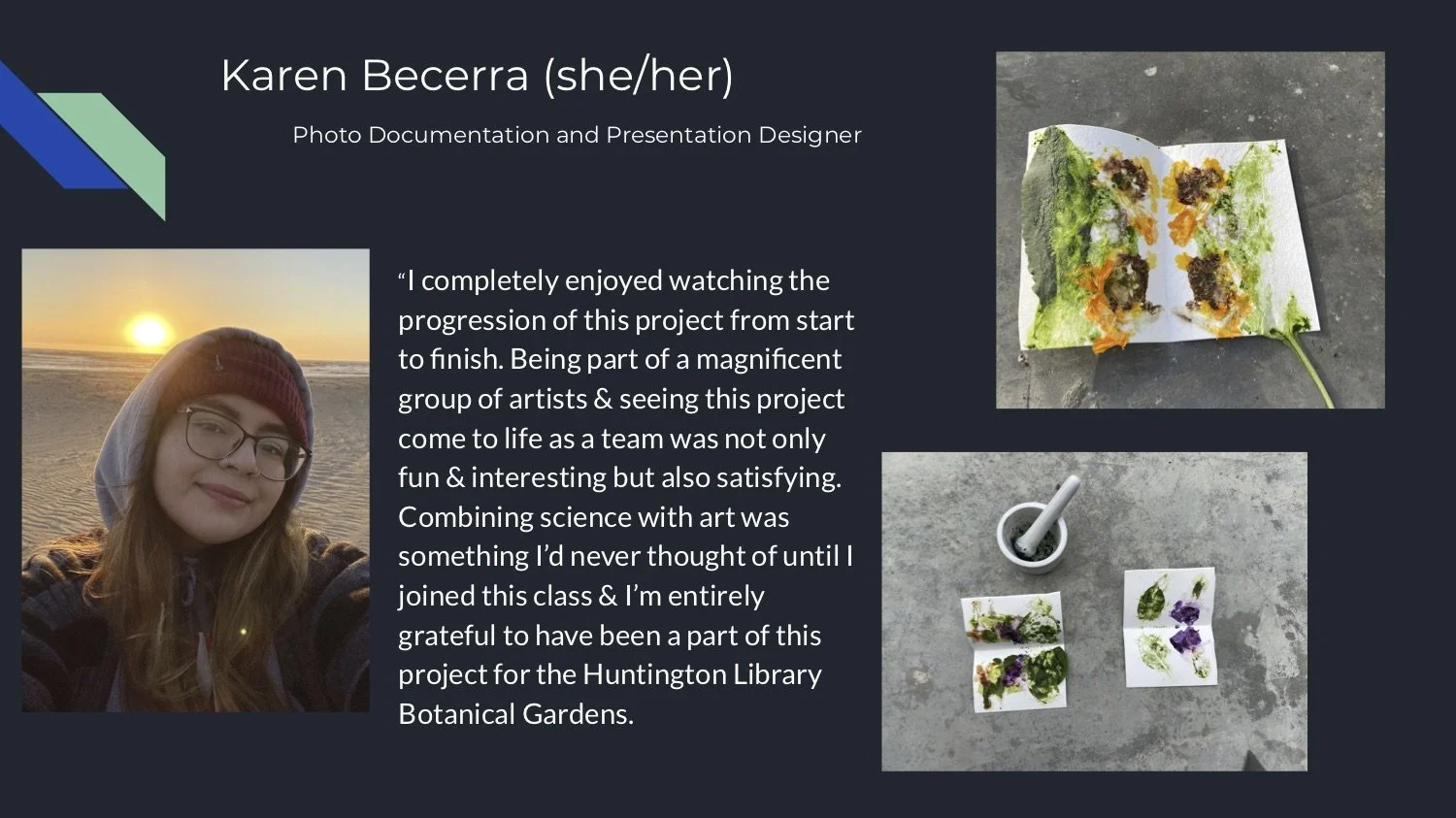A Plant Color Library
A student-created library of colors derived from plant pigments for the Huntington Botanical Gardens. (pilot project)
My students were so honored to create the interpretation for the Huntington’s pilot experiment.
As part of our work with Armory Center for the Art’s project for the Getty Foundation’s PST Art x Science program, Sean C. Lahmeyer, Collections and Conservation Manager and Curator of The Herbarium at The Huntington Library, Art Museum, and Botanical Gardens initiated a conversation about creating a color library - a library of colors derived from plants in the botanical gardens.
Kelly Fernandez, Head Gardener, Herb & Shakespeare Gardens, and her team collected 10 species of aloe. They used a hammering technique to extract pigments from the plants. The team logged the pigment colors (before and after oxidation) matching them to a Pantone color swatch book.
Students in my CSU Monterey Bay Visual Design course used this data to create an interpretive document. They used Medieval Herbals as inspiration.
Please click the images below to view their work.
Students in this class are mostly non-traditional college students from underserved communities. This was their first co-design and first science communication project.
They decided to create a presentation about who they are, their process, and their experiences working on the project.
Please click the images below to view the presentation.
Want to try a project like this with your students?
Here’s how to hammer plants!
Here are some fun resources:
Library of Congress: https://archive.org/
Smithsonian's Biodiversity Heritage Library: biodiversitylibrary.org
Archives of seed catalogs through the Smithsonian's Trade Literature collection: https://library.si.edu/trade-literature
Coreopsis growing in a fog catching, hydroponic pot.

